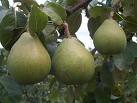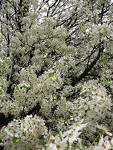The Monkey Pod tree is very distinctive with its huge canopy which can grow if unobstructed to 200 feet. It can reach heights of 100 feet, so is an impressive tree. In Venezuela it is said that Simón Bolívar (1783-1830) once camped his whole army under a Monkey Pod tree near Maracay. This tree is native to Central and South America but has spread to some Caribbean Islands where it has become naturalized as it is believed to have been taken these in the 16th century. It is also naturalized in Hawaii where it was grown from a seed in 1847 and it is thought that this original plant is the ancestor of all Monkey pod trees on the islands. It can also be seen in parts of Florida. It was introduced to Fiji and Vanuatu, but is regarded as an invasive pest there. It also grows in Thailand where it is host to the lac insect from which we get shellac. In the Philippines it is known as mimosa because it is in the Mimosoideae family, while it is known as saman in Latin America from the alternative Latin name for this tree, Samanea saman. The flowers look like pink and white powder puffs.
 It is related to Albizia lebbeck which grows in Asia, and is a member of the Fabaceae or Mimosaceae family so is related to other pod bearing trees such as carob and the neem tree. The long pods (4 – 8 inches long) contain a sweet sticky pulp and seeds, all of which have a liquorice flavour. It is known as the liquorice tree in parts of the Caribbean. However it is not advisable to eat more than one pod because of their astringency.
It is related to Albizia lebbeck which grows in Asia, and is a member of the Fabaceae or Mimosaceae family so is related to other pod bearing trees such as carob and the neem tree. The long pods (4 – 8 inches long) contain a sweet sticky pulp and seeds, all of which have a liquorice flavour. It is known as the liquorice tree in parts of the Caribbean. However it is not advisable to eat more than one pod because of their astringency. The Monkey Pod tree is called this perhaps because monkeys are fond of the pods and sit in the trees eating them. The tree’s name in Greek, Pithecellobium means “monkey earring” and is one of the tree’s botanical names. It is called the Rain tree perhaps for several reasons; one might be that any grass or vegetation under the tree is lush and green even in times of drought. This is because the tree has nyctinastic leaf movements like Choi-Moi or the Tickle Me plant; its leaves close and curl up at night so that any rain that falls hits the ground more easily than it would under a tree with ordinary leaves. The pods and flowers are nitrogen rich and when they fall and decay, the nitrogen goes into the soil. Plants need this to make chlorophyll which gives them their green colour, so perhaps this is why there is lush vegetation under the Rain tree. Farmers like the trees because they are nitrogen fixers and they also grow quickly, the durable, hard wood is sustainable and eco-friendly so can be used for furniture and hand-carved bowls and decorative pieces. In Thailand the tree is host to the lac insect from which we get shellac.
The Monkey Pod tree is called this perhaps because monkeys are fond of the pods and sit in the trees eating them. The tree’s name in Greek, Pithecellobium means “monkey earring” and is one of the tree’s botanical names. It is called the Rain tree perhaps for several reasons; one might be that any grass or vegetation under the tree is lush and green even in times of drought. This is because the tree has nyctinastic leaf movements like Choi-Moi or the Tickle Me plant; its leaves close and curl up at night so that any rain that falls hits the ground more easily than it would under a tree with ordinary leaves. The pods and flowers are nitrogen rich and when they fall and decay, the nitrogen goes into the soil. Plants need this to make chlorophyll which gives them their green colour, so perhaps this is why there is lush vegetation under the Rain tree. Farmers like the trees because they are nitrogen fixers and they also grow quickly, the durable, hard wood is sustainable and eco-friendly so can be used for furniture and hand-carved bowls and decorative pieces. In Thailand the tree is host to the lac insect from which we get shellac. The seeds and pods can be fed to animals and the contents of the pods are made into a refreshing soft drink something like tamarind water in the West Indies. The seeds are washed to remove the sticky pulp, and dried then used to make jewellery such as necklaces and other decorative items.
The seeds and pods can be fed to animals and the contents of the pods are made into a refreshing soft drink something like tamarind water in the West Indies. The seeds are washed to remove the sticky pulp, and dried then used to make jewellery such as necklaces and other decorative items. Modern medical research has shown that the Monkey Pod tree has antibacterial and anti-fungal activities and can fight Staphylococcus aureus, Candida albicans and E. coli infections. An alcohol extract of the leaves may inhibit Mycobacterium tuberculosis, but more research is needed.
In the West Indies the leaves are chewed to relieve toothache, and a root decoction is used in hot baths in Venezuela for stomach cancer. An infusion of the leaves is given for constipation and in the Philippines a decoction of the inner bark and the fresh leaves is given for diarrhoea. A boiled bark poultice is used to cure constipation too.
 |
| It's my tree |
The flowers attract honey bees as well as birds, moths and other insects, and locals enjoy the honey produced from the nectar, but it is only consumed in the locality of the growing trees.
It is another of Nature’s wonderful health-giving trees.


















